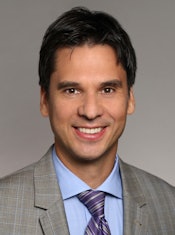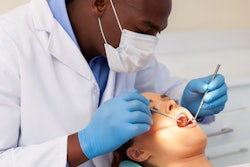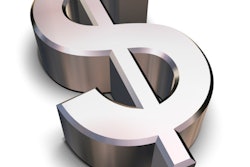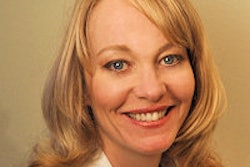
Why is there a persistent gap in earnings between male and female dentists? Researchers examined this issue in dentists, compared with physicians and lawyers, and found that the difference has decreased among them all but remains. However, a greater proportion of the gap is still unexplained among dentists, an amount that has held steady over time.
In recent decades, the number of women in the labor force has increased substantially, particularly in dentistry, medicine, and law. But women's earnings in these highly skilled occupations and other industries still significantly lag behind those of men.
The authors of a new study in the Journal of the American Dental Association (April 2017, Vol. 148:4, pp. 257-262) wanted to better understand the earnings gender gap in dentists by studying it in relation to the legal and medical professions. They found that large unexplained gender-based earnings chasms remained in all three occupations despite the fact that the difference in average earnings between men and women in these professions has lessened substantially.
"Our results raise questions about the source of unexplained earnings differences between the sexes across high-skill professions," the authors wrote.
They were Thanh An Nguyen Le, PhD, a lecturer at International University, Vietnam National University in Ho Chi Minh City; Anthony LoSasso, PhD, a professor in health policy and administration at the University of Illinois at Chicago; and Marko Vujicic, PhD, chief health economist and vice president at the ADA's Health Policy Institute.
Work like a man
Women made up only 3% of dentists in 1982, which increased to 22% in 2004 and is projected to be at 28% to 30% by 2020, the authors wrote. Likewise, the dental student population was 24% female in 1985, jumping to 42% in 2004 and 47% in 2014. Similar trends have been seen among medical school and law students, they reported.
Nonetheless, differences still persist in earnings between women and men working in each of these professions. To better understand this, the authors investigated the extent to which this gap is related to changes in the characteristics of women and men working in these professions and how these changes vary among the three professions. They examined how much of the earnings difference between women and men could be accounted for through observable factors, such as age, hours worked per week, and self-employment status.
The investigators used data for physicians, lawyers, and dentists from the Integrated Public Use Microdata Series census microdata for 1990 and 2000 and the five-year American Community Survey sample for 2007 through 2011. They constructed a model to determine how much of the difference in earnings between women and men in the three professions could be attributed to the following characteristics:
- Age
- Race or ethnicity
- Marital status
- Number of children
- Hours worked per week
- Weeks worked per year
- Business owner status
They found that the earnings of female dentists have increased substantially and the gap between female and male dentists' earnings has been lessening. However, female dentists earned on average only 65% of what their male counterparts earned as recently as 2010, or $120,475 compared with $185,192.
Likewise, the earnings gender gap in physicians and lawyers has been easing. But still, in 2010, female physicians brought in only 62% of male physician earnings ($145,061 versus $234,201), and female lawyers earned just 64% of what their male counterparts did ($171,284 versus $108,831).
| Changes in earnings and characteristics among male and females dentists | ||||||
| Dentist characteristic | 1990 | 2000 | 2010 | |||
| Male | Female | Male | Female | Male | Female | |
| Income | $148,874 | $65,744 | $192,145 | $105,766 | $185,192 | $120,475 |
| Mean age (years) | 47.22 | 39.02 | 49.99 | 39.16 | 53.63 | 42.30 |
| Number of children | 1.11 | 0.81 | 1.01 | 1.05 | 0.88 | 1.09 |
| White | 92.76% | 82.01% | 89.32% | 71.02% | 87.21% | 66.85% |
| Black | 2.35% | 4.93% | 2.39% | 5.77% | 2.11% | 4.79% |
| Other race | 4.89% | 13.05% | 8.30% | 23.22% | 10.68% | 28.36% |
| Married | 85.53% | 68.86% | 84.32% | 70.79% | 84.98% | 75.96% |
| Self-employed | 79.66% | 44.71% | 78.11% | 50.83% | 72.87% | 50.52% |
| Hours worked/week | 38.73 | 34.74 | 37.63 | 36.77 | 35.79 | 35.66 |
Self-employment was more common in male than female dentists, but this gap lessened over time, with men becoming less likely to be self-employed and women becoming more likely.
“The reduction in the earnings gap was driven largely by the fact that there was a general convergence between men and women in the observable characteristics used in our study over time.”
Other trends included that age varied significantly between male and female dentists, growing from a difference of approximately eight years in 1990 to 11 years in 2010. Age differences and differences in hours worked per week were large and significantly explanatory factors in all three professions, according to the authors.
The difference in earnings between male and female dentists that could be explained by the model used in this study changed little; it was 37.6% in 1990, 33.6% in 2000, and 36.1% in 2010. The explainable earnings differences between men and women were greater among physicians and lawyers than among dentists at all time points but also did not improve, dropping from 65.7% to 55.0% in lawyers and 45.6% to 42.7% in physicians.
"The reduction in the earnings gap was driven largely by the fact that there was a general convergence between men and women in the observable characteristics used in our study over time," the authors wrote.
Male and female dentists became more similar to each other in marital status and number of children but these traits accounted for only small effects in earnings. The percentage of male and female dentists who said they were white decreased over time, although female dentists became more racially and economically diverse compared with men.
"There is a still a large component of the earnings gender gap for all three professions that is not explained by difference in observable characteristics," the authors wrote.
Why dentistry needs women
 Marko Vujicic, PhD, chief economist and vice president of the ADA Health Policy Institute. Image courtesy of the ADA.
Marko Vujicic, PhD, chief economist and vice president of the ADA Health Policy Institute. Image courtesy of the ADA.Study co-author Vujicic and colleagues from the Health Policy Institute wrote a commentary about the gender gap in dentist earnings that was also published in the April issue of JADA (April 2017, Vol. 148:4, pp. 204-206).
"It is important to note the narrowing over time is because women dentists are 'looking' more like male dentists in terms of hours worked and experience," they wrote.
They reported that Health Policy Institute pooled data for 2013 to 2015 found that general practice dentists who are sole or part owners of their practices had significant differences in earnings between men and women after adjusting for hours worked, years of experience, specialty, and ownership status. The difference in average net income per hour expressed as a percentage of the average for male dentists was 37% for those with five to nine years of experience, 20% for 10 to 19 years, and 25% for more than 20 years.
Why does the gap persist?
"First, the existing research could be failing to measure important characteristics of dentists that vary by sex and also drive earnings," the commentary authors wrote.
This could include that female dentists are more likely to treat Medicaid patients, whose care is reimbursed at lower rates than private dental insurance reimbursement. Female dentists are also more likely to focus on less-invasive, preventive procedures, which are typically reimbursed at lower rates than surgical treatment, according to the authors.
"Second, female dentists might just be compensated less for the exact same work," they wrote.
This could be due to their charging lower fees, entering into less favorable ownership or partnership arrangements, or accepting lower compensation packages in their first job, according to the authors. However, data and research are lacking in this area.
At the same time, preventive dentistry and the dental Medicaid market are expected to expand in importance.
"For these and a host of other reasons, dentistry must continue to attract women to the profession," the authors concluded. "Although we could always use more research, we know enough now to motivate a deeper discussion as a profession on the gender earnings gap. And how to address it."
In the main study, the authors noted that data on more variables would reduce the portion of the differences in male and female earnings that remain unexplained. The data they used does not include information on specialties for any of the professions, employment history, years spent working, time spent outside of the labor force, type and size of practice, geographic location, and many other factors, they wrote.
They believe that their findings have important implications for research and policy but must be used wisely.
"Policymakers must use care because measures intended to help alleviate earnings differences for men and women could make matters worse, particularly absent a clear understanding of the nature of the factors driving the differences," the authors concluded.



















